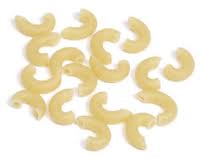I have always been a fan of 'Old fashioned Puddings' I saw this by chance when I was doing a bit of catch up TV. There was a bit of Country File before my programme and they were making this glorious pudding of which I didn't know the name. Programme forgotten I started googling and found my recipe. It came from Malvern College in Malvern, Worcestershire. Of course no mind for my waistline it had to be made.
It involves buttery cinnamon apples covered in an egg custard made with cream. It is gorgeous. It is meant to be served hot from the oven which I did but as there was enough left for next day into the fridge it went. Oh my lord I have to tell you I loved it even more when it was cold. Double whammy. So good for entertaining made in advance and chilled. Lovely served hot on a cold winters evening. Comfort food at its best. Did I tell you I was watching my waist line?
This traditional Georgian dish combines buttery cooked
apples with a creamy cinnamon sauce.
apples with a creamy cinnamon sauce.
Ingredients
The Apples
50g/2oz butter
1kg/2lb 2oz cooking apples, peeled, cores removed, sliced
50g/2oz granulated sugar
2 lemons, zest only
The Topping
825ml/1 pint 10fl oz double cream
50g/2oz granulated sugar
4 free-range eggs, plus 2 yolks beaten
50g/2oz demerara sugar
½ tsp ground cinnamon
Preparation
. For the apples, heat a large frying pan until medium hot,
add the butter and apples and cook for 6-7 minutes, or until
the apples have softened but still have their shape.
add the butter and apples and cook for 6-7 minutes, or until
the apples have softened but still have their shape.
. Add the sugar and lemon zest, stirring well, and cook for 2-3
more minutes.
Transfer the apples to an ovenproof dish.
more minutes.
Transfer the apples to an ovenproof dish.
. Beat together the eggs & granulated sugar then gently
mix in the warmed cream and strain over the cooled apples
mix in the warmed cream and strain over the cooled apples
. Bake in a medium oven until the egg mix is set, but still
wobbly (approx 1 hour) leave to cool slightly
wobbly (approx 1 hour) leave to cool slightly
. Mix the demerara sugar and ground cinnamon together in a
bowl, then sprinkle over the top of the dish and dot with the
remaining butter.
Grill for 5-6 minutes, or until golden-brown and bubbling.
bowl, then sprinkle over the top of the dish and dot with the
remaining butter.
Grill for 5-6 minutes, or until golden-brown and bubbling.
Spoon the pudding into shallow serving bowls and serve .
My Notes
I made half the quantity and it gave four servings.
I did not do the grilling bit. Too much faff for me. I sprinkled
cinnamon on the top before putting it in the oven and about
half way through sprinkled over demerara sugar.
Oh and remember it may count as one of your five a day!!!
That will make up for the calories


























